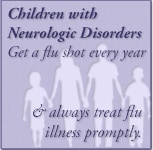Causes and Risk Factors

Developmental disabilities begin anytime during the developmental period and usually last throughout a person’s lifetime. Most developmental disabilities begin before a baby is born, but some can happen after birth because of injury, infection, or other factors.
Most developmental disabilities are thought to be caused by a complex mix of factors. These factors include genetics; parental health and behaviors (such as smoking and drinking) during pregnancy; complications during birth; infections the mother might have during pregnancy or the baby might have very early in life; and exposure of the mother or child to high levels of environmental toxins, such as lead. For some developmental disabilities, such as fetal alcohol syndrome, which is caused by drinking alcohol during pregnancy, we know the cause. But for most, we don’t.
Following are some examples of what we know about specific developmental disabilities:
- At least 25% of hearing loss among babies is due to maternal infections during pregnancy, such as cytomegalovirus (CMV) infection; complications after birth; and head trauma.
- Some of the most common known causes of intellectual disability include fetal alcohol syndrome disorder; genetic and chromosomal conditions, such as Down syndrome and fragile X syndrome; and certain infections during pregnancy.
- Children who have a sibling with autism spectrum disorder are at a higher risk of also having autism spectrum disorder.
- Low birthweight, premature birth, multiple birth, and infections during pregnancy are associated with an increased risk for many developmental disabilities.
- Untreated newborn jaundice (high levels of bilirubin in the blood during the first few days after birth) can cause a type of brain damage known as kernicterus. Children with kernicterus are more likely to have cerebral palsy, hearing and vision problems, and problems with their teeth. Early detection and treatment of newborn jaundice can prevent kernicterus.
The Study to Explore Early Development (SEED) is a multiyear study funded by CDC. It is currently the largest study in the United States to help identify factors that may put children at risk for autism spectrum disorders and other developmental disabilities.
Who Is Affected
Developmental disabilities occur among all racial, ethnic, and socioeconomic groups. Recent estimates in the United States show that about one in six, or about 17%, of children aged 3 through 17 years have one or more developmental disabilities, such as:
- ADHD,
- autism spectrum disorder,
- cerebral palsy,
- hearing loss,
- intellectual disability,
- learning disability,
- vision impairment,
- and other developmental delays.2
Learn more about the number of children in the U.S. with developmental disabilities »
For over a decade, CDC’s Autism and Developmental Disabilities Monitoring (ADDM) Network has been tracking the number and characteristics of children with autism spectrum disorder, cerebral palsy, and intellectual disability in several diverse communities throughout the United States.
CDC’s tracking of the number and characteristics of children with autism spectrum disorder »
CDC’s tracking of the number and characteristics of children with cerebral palsy »
Living With a Developmental Disability
Children and adults with disabilities need health care and health programs for the same reasons anyone else does—to stay well, active, and a part of the community.
Having a disability does not mean a person is not healthy or that he or she cannot be healthy. Being healthy means the same thing for all of us—getting and staying well so we can lead full, active lives. That includes having the tools and information to make healthy choices and knowing how to prevent illness. Some health conditions, such as asthma, gastrointestinal symptoms, eczema and skin allergies, and migraine headaches, have been found to be more common among children with developmental disabilities. Thus, it is especially important for children with developmental disabilities to see a health care provider regularly.
Learn more about healthy living »
CDC does not study education or treatment programs for people with developmental disabilities, nor does it provide direct services to people with developmental disabilities or to their families. However, CDC has put together a list of resources for people affected by developmental disabilities.
List of developmental disabilities resources »
References
- Zablotsky B, Black LI, Maenner MJ, Schieve LA, Danielson ML, Bitsko RH, Blumberg SJ, Kogan MD, Boyle CA. Prevalence and Trends of Developmental Disabilities among Children in the US: 2009–2017. Pediatrics. 2019; 144(4):e20190811.
